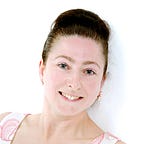Dec 2015 — ATOMS, Austria and Æbleskiver
Copenhagen continues to be wonderful not least because Christmas starts with a bang — full blast and twinkling — here. Everything is very pretty which goes some way to ameliorating the dampening effect of walking The Terrible Terriers in the dark at either end of the day no matter how early you get up or try to finish work.
December saw the start of a lecture programme I facilitated with Luise Ørsted Brandt (see photo). My MSC fellowship requires me to undergo “knowledge transfer” which means I need to demonstrate I have learnt new things and broadened my horizons intellectually. Part of my project proposal was to acquire an understanding of pioneering scientific techniques which reveal new insights into archaeological and historical artefacts, specifically organic materials. I see myself becoming a forensic forager in the fluff of history — or forming CSI Copenhagen (Clothing Studies Investigation), as I like to think of it. Luise is definitely on the team.
We sat together at boot camp in September. Luise recently completed her doctorate which concentrated on what we can learn about sheep as a textile resource from the materials available in museum collections. Since wool is central to my study of knitted caps, I asked her to tell me more about her research. Luise used DNA and protein analysis on yarn and bones and is well acquainted with other cutting edge methods for investigating wool, such as strontium isotope identification and electron microscopy. I asked Luise if she could explain these techniques and recommend appropriate literature for me. She said Copenhagen boasts an enviable cohort of experts in these fields. In the course of a swift conversation, we had invented a lecture series.
We launched ATOMS — analytical tools for organic material studies — on Monday 7 December with a presentation on DNA analysis by Luise. The free lecture series was only announced at the end of October and we were thrilled when 15 people attended the first session. More participants quickly signed up for the programme, which we hope to turn into an online course next year. I invested a substantial part of my research grant to facilitate this project and was very glad to receive a contribution from the CTR too. We are recording all the lectures and developing resources to create an eLearning opportunity in the future. The second lecture was about identifying fibres using microscopy by Anne Lisbeth Schmidt who is a conservator specialising in skin clothing at the National Museum. We then went to the Core Facility for Integrated Microscopy for a tour with Klaus Qvortrup. These resources promise great things for textile studies.
Ninya and I went on a Tudor Tailor weekend visit to the University of Innsbruck in December. Our lovely host, Beatrix Nutz, showed us pieces of woven textile garments found in mines, which are now very challenging jigsaw puzzles. She also kindly provided samples from two fragmented knitted caps (see photo) which I will use to initiate my scientific investigation of the raw materials used in the c16th capping industry. These Austrian caps are remarkably similar to others in collections elsewhere in Europe. It will be very revealing to compare results across the spectrum of samples.
Photographs showing the results of test knitting by the KEME team which started in October arrived in earnest this month. I need to make sure that I have recorded everybody’s willingness to have their work shown and identified online before I can start using these images. I must also decide how to record and protect the information the participants have provided according to my data management plan (a requirement of my open access agreement with the Horizon 2020 grant programme). This first project has shown that individual knitter’s insights into reconstructions are useful evidence. Huge thanks to the enthusiastic knitters who took part. More and more volunteers have been joining the project and I’ve been struggling to integrate all the different media we are using in a workable way. Over the Christmas break, I will gather all the contact details and plan how to manage the knitting power I’ve harnessed.
I had the feeling of being a minor celebrity this month as I appeared on the cover of a glossy brochure and was featured as a full-page image inside (see photo). It promotes seminars intended to help people apply for European grants so I don’t think it will end up in a dentist’s waiting room next to Grazia and Good Housekeeping. Still, it was nice to be asked.
TLG and I experienced Christmas Copenhagen-style when my sister and her husband came to stay. We went to the Tivoli Gardens, which are delightful. We visited the pirate ship and I did my Smee impression (see photo). We drank gløgg and ate æbleskiver. These are the secret ingredients which make Danish people happy despite the cold and the dark. It seemed to work its magic at my Danish exam the following week. I passed Module 1. Hurrah! Og Glædelig Jul …
